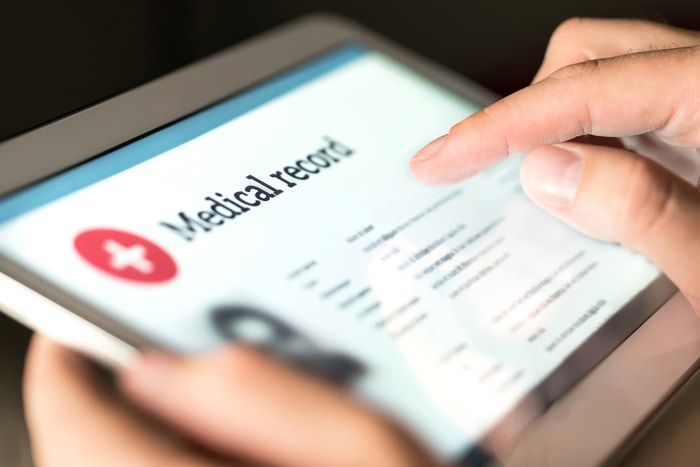The responsibility of the healthcare industry does not stop with quality patient care. Every day the industry churns out data in the millions, and it must ensure the security of patients’ healthcare data. There are strict regulations that require them to do so. HIPAA sets the standards to protect patients’ sensitive data. The U.S. Department of Health states that the HIPAA Privacy Rule sets up the national standards for the safety of patients’ health-related data. The EU has introduced the General Data Protection Regulation (GDPR) that provides the guidelines and regulations related to data protection.

As per the HIPAA Journal on Feb 25, 2019; there were 33 healthcare data breaches in January 2019, and 490,937 records tampered. You are required to set up internal processes to ensure the security of the sensitive data about your patients. Data should be accessible to authorized personnel only and deploy proper mechanisms to prevent data breaches. We will now discuss some of the best practices that need to be undertaken to secure healthcare data.
Periodic risk assessment
Assessing risk and vulnerability to external attacks at regular intervals helps to understand the potential areas of dangerous attacks. The assessments will help you to pinpoint every possible risk and formulate a mitigation plan to allocate resources to plug these gaps and to address these risks in the event of a data breach. Risk assessment is an ongoing process that ensures adherence to laid down procedures. Potential data risks also change over time. Periodic assessments help to manage such changes effectively and efficiently by making changes in internal policies.
Ongoing training of employees
You need to create a training manual to train your employees about the best practices in handling patient data. The training process should also include the Do’s and Don’ts as per the HIPAA Privacy Policy or the GDPR. Train your employees about the various types of attacks that can be carried out and how to avoid and thwart such attacks. After each training session, you need to evaluate the understanding of your employees. These training sessions need to happen periodically.
Restricted access to sensitive data
Do request your IT team to create a robust data protection policy. Restriction of access to data starts with a password. Do ask them to formulate a password policy for access to sensitive data and information. You can also opt for biometric access to healthcare data. Multi-level authentication also goes a long way to restrict access to sensitive data. It would be best if you also blocked employees from accessing healthcare data from external as well as personal devices. You need to install a robust firewall to prevent access to unnecessary websites and downloading of unauthorized software.
Monitoring of access information
Internal breaches are a significant cause of worry. Only authorized personnel should have access to the database and organizations should monitor and log all access records. Your IT team should block all access to the ports as these can let in malicious software into the database systems. As technology advances bring efficiencies in processes, it has its flipsides also. You need to monitor all Internet of Things (IoT) devices closely. Your team should have specific policies related to data protection through IoT devices. It would be best if you had visibility across all such devices in your network. You can deploy specialized software’s – the Endpoint Protection Systems to help you protect your network devices when accessed by remote devices.
Data encryption
Data encryption is one of the ways to mitigate risks arising from data breaches. Encryption translates the data into a secret code. To read this code, you need to have a private key, and this needs to be in possession of authorized personnel only. There is a dramatic change if data is encrypted. Suddenly, the information is encoded to anyone who accesses it but does not have a private key.
SSL aka Secure Sockets Layer (SSL) protocol encrypts communications between the browser and the server that helps to prevent data breaches based on eavesdropping. One of the useful certificate naming Wildcard SSL Certificate is easy to manage and flexible, is a top choice for organizations. In case, when you have multiple subdomains of the main domain, wildcard SSL can be a great deal for your website security.
Data Backup and Disaster Recovery
Data breaches can also hamper data availability. There have been instances where it took hours for a data center to be up and running after a data breach. There are various other reasons as well; viz. natural calamities, mishaps, etc. that require the healthcare to back up their critical information periodically. The IT team needs to have documented policies regarding data backup. Also, replicate the data center at a second location. The data, as well as the disaster recovery setup, needs to be encrypted as well.
Have a documented response plan
Healthcare organizations need a detailed response plan for any breaches that may happen over time. You should have an action plan with defined responsibilities for the task owners. A documented plan helps to come up with a structured response in the event of a data breach.
Conclusion
The healthcare industry is prone to data breaches. Cyber-attacks and data breaches put the sector at substantial financial and operational risk. You need to protect the healthcare data of your patients.
Implementation of the factors mentioned above is bound to improve data security and prevent potential threats from external agents.
